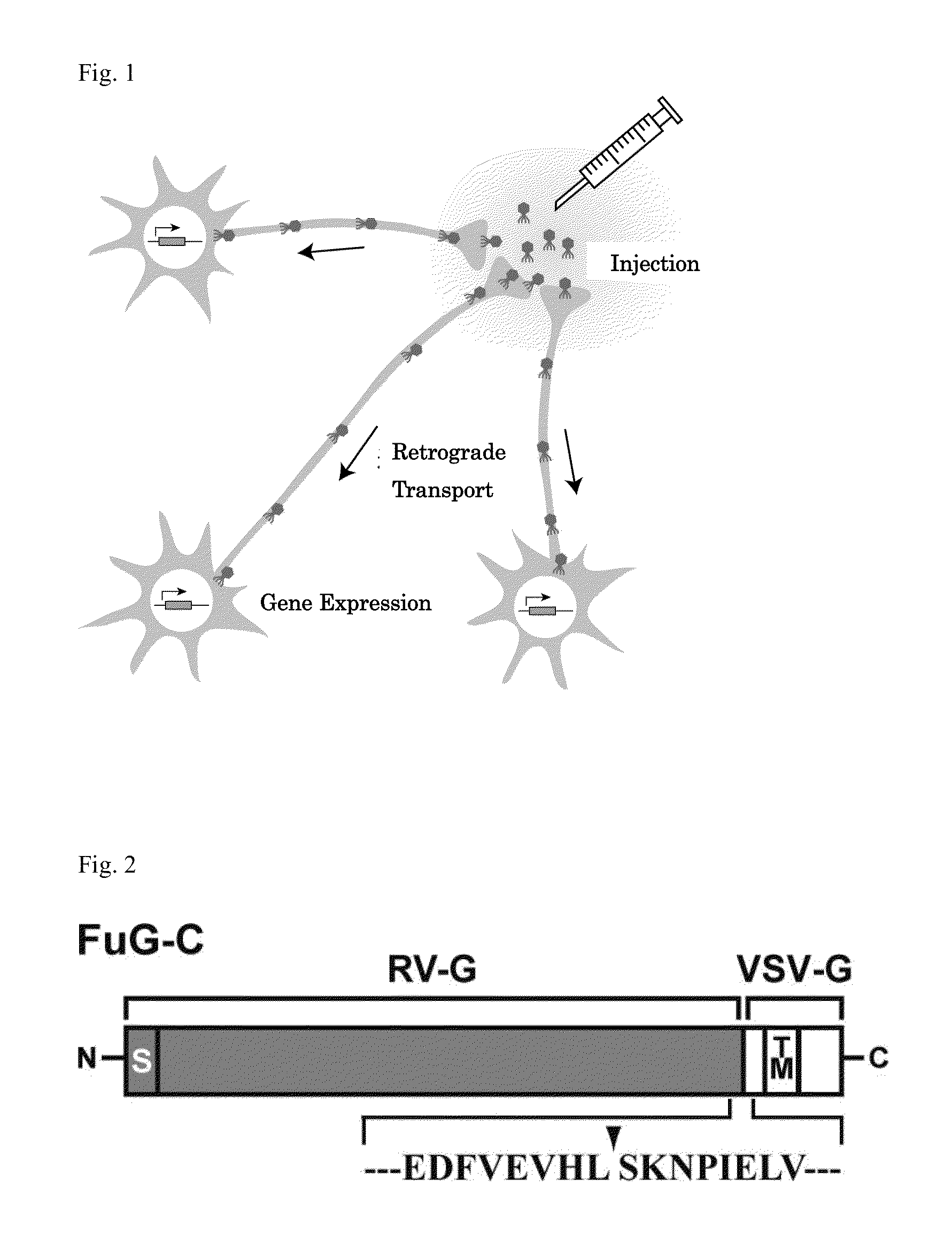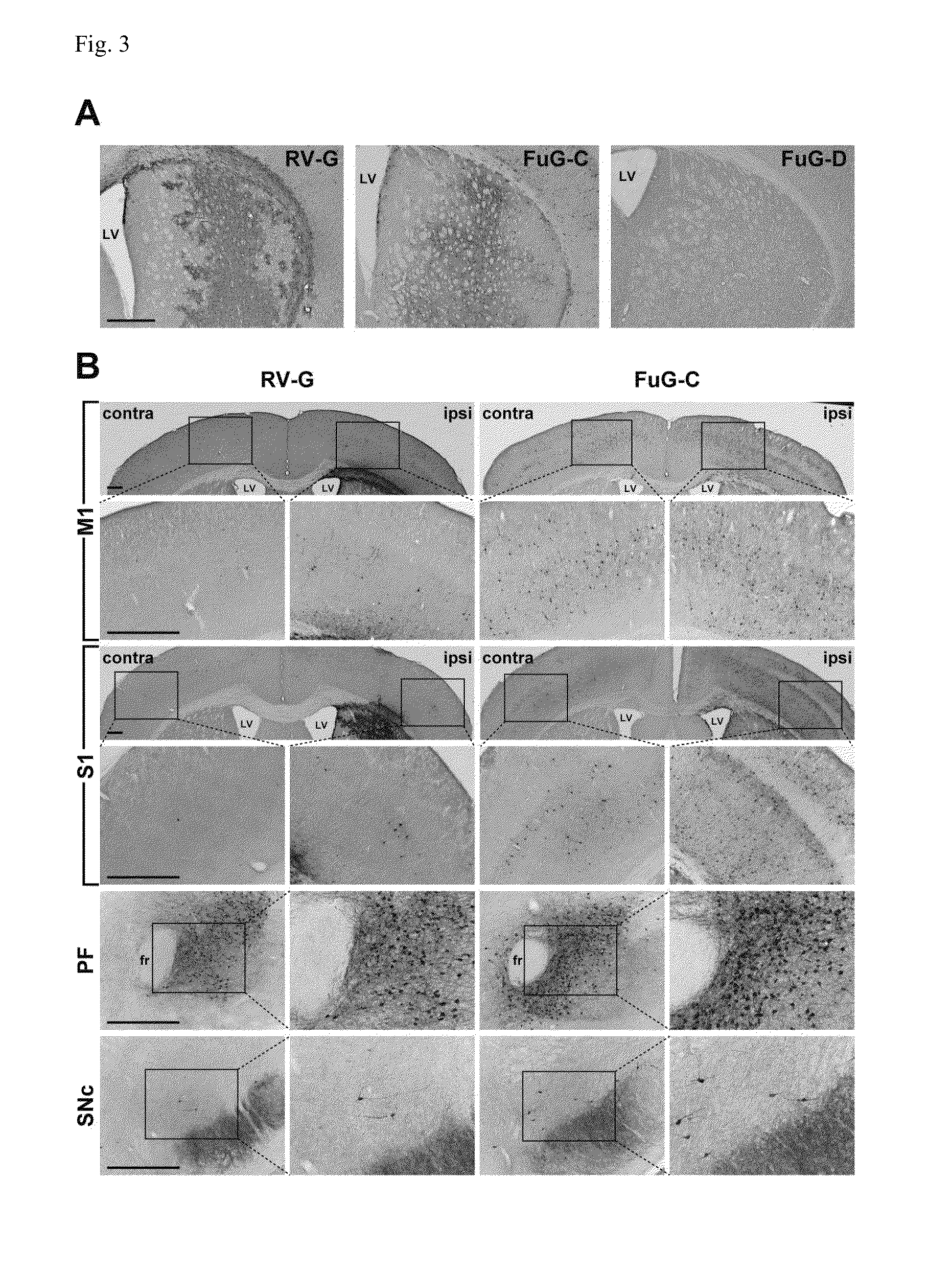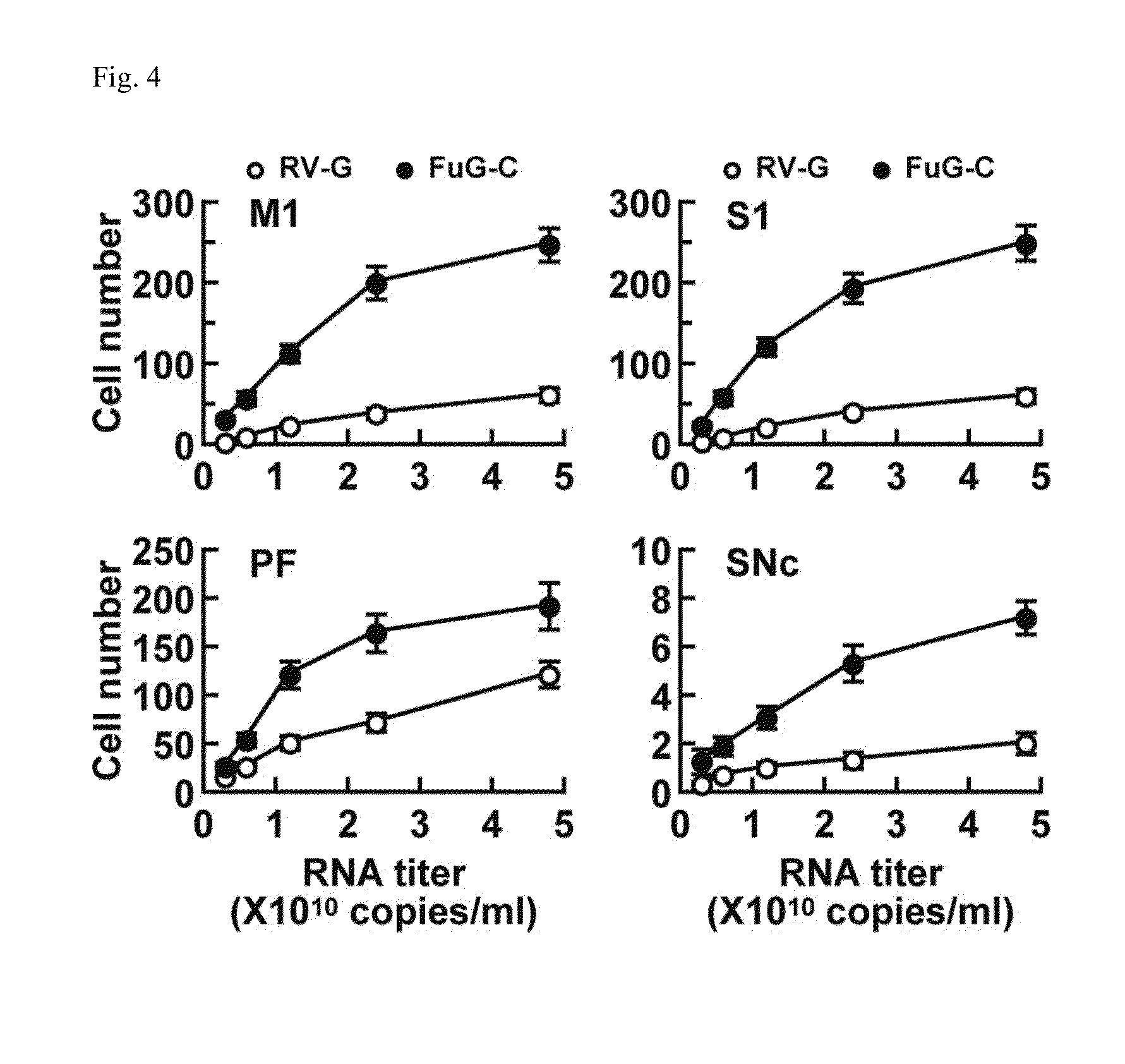Neuron-specific retrograde transport vector
a retrograde transport vector and neuron-specific technology, applied in vectors, viruses, fusion polypeptides, etc., can solve the problems of inefficient retrograde transportation of vectors, lentiviral vectors have a risk of inducing cancer, etc., to suppress the frequency of gene transfer, reduce the risk of cancer occurrence, and increase the viral titer
- Summary
- Abstract
- Description
- Claims
- Application Information
AI Technical Summary
Benefits of technology
Problems solved by technology
Method used
Image
Examples
example 1
Preparing a Viral Vector:
[0077]A viral vector according to the present invention was prepared using a HIV-1 vector system developed by Dr. Arthur Nienhuis at St. Jude Children's Research Hospital. Namely, a packaging plasmid containing the gag and pol gene (pCAGkGP1.1R), a packaging plasmid containing an accessories gene (pCAG4-RTR2) and a transfer plasmid containing a green fluorescence protein (GFP) as a target gene (pCL20 c-MSCV-GFP) were used.
[0078]As an envelope plasmid (pCAG-FuG-C), a vector containing a base sequence (SEQ ID NO 5) encoding an envelope was produced according to the conventional method, wherein the envelope was a fused glycoprotein (FuG-C) consisting of the C-terminal region of the extracellular domain of VSV-G linked to the N-terminal region of the extracellular domain of RV-G that had been provided by Dr. Kinjiro Morimoto at National Institute of Infectious Diseases, and the transmembrane domain and the intracellular domain of VSV-G. (FIG. 2). The extracellul...
example 2
[0083]Introduction of the Viral Vector into the Brain of Mouse:
[0084]Animal care and use was performed according to a guideline by the animal care and use committee of Fukushima Medical University. A 12-week old mouse (C57BL / 6J) was anesthetized with pentobarbital sodium (50 mg / kg, i.p.), and a solution containing a vector produced as described above (4.8×1010 copies / ml) was injected in the brain (striatum) of the mouse using a brain stereotaxic apparatus. The injection was performed according to the mouse brain atlas (PAXINOS, G., and FRANKLIN, K. B. J. (2001). The Mouse Brain in Stereotaxic Coordinates, 2nd edn. (Academic Press, San Diego). 2 μl of the solution was injected (0.1 μl / min) at two points along the track respectively in the dorsal region of striatum through a glass microinjection capillary connected to a microinjection pump. Anteroposterior, mediolateral and dorsoventral coordinates from bregma were 0.50, 2.00 and 2.50 / 3.25 (mm), respectively.
[0085]Four weeks after the...
example 3
[0088]Selective Transfer of Gene into Neurons:
[0089]The efficiency of the gene transfer into the neurons and glia cells at the injected site of the FuG-C vector was analyzed. After each vector of VSV-G, RV-G and FuG-C (1.2×1010 copies / ml) was injected into the striatum of the mouse, the sections of the striatum were prepared in the same way as in Example 2. Double immunostaining was done with the neuron marker of NeuN and GFP, or with the glia cell marker of GFAP and GFP (FIG. 5). First, a ratio of the number of GFP+ / NeuN+ double positive cells to the number of the total NeuN+ positive cells, and a ratio of the number of GFP+ / GFAP+ double positive cells to the number of the total GFAP+ positive cells were measured, respectively. The ratio of the number of GFP+ / NeuN+ double positive cells was 81.7±2.9%, 21.4±1.8%, and 6.2±1.4% for the vectors of VSV-G, RV-G and FuG-C, respectively (n=4). The efficiency of the gene transfer with the FuG-C vector into the neurons in the striatum was si...
PUM
| Property | Measurement | Unit |
|---|---|---|
| pH | aaaaa | aaaaa |
| thickness | aaaaa | aaaaa |
| β | aaaaa | aaaaa |
Abstract
Description
Claims
Application Information
 Login to View More
Login to View More - R&D
- Intellectual Property
- Life Sciences
- Materials
- Tech Scout
- Unparalleled Data Quality
- Higher Quality Content
- 60% Fewer Hallucinations
Browse by: Latest US Patents, China's latest patents, Technical Efficacy Thesaurus, Application Domain, Technology Topic, Popular Technical Reports.
© 2025 PatSnap. All rights reserved.Legal|Privacy policy|Modern Slavery Act Transparency Statement|Sitemap|About US| Contact US: help@patsnap.com



